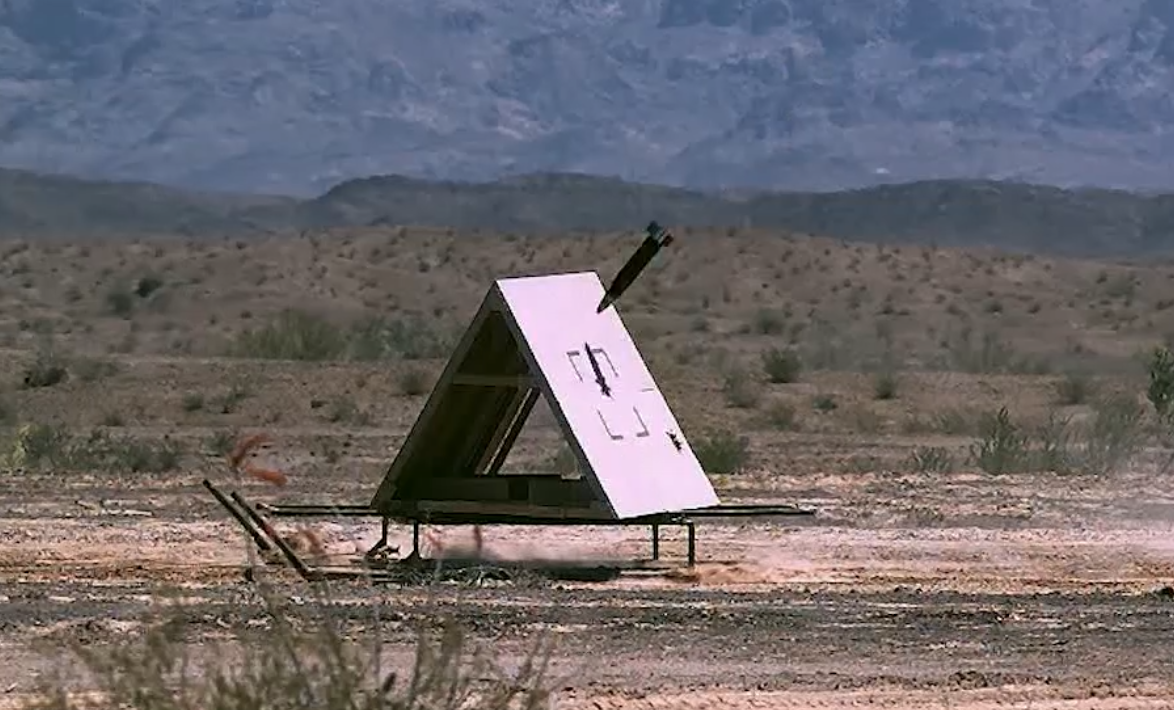A new version of a precision-guided artillery shell made by Tucson-based Raytheon Missile Systems scored direct hits on a moving target for the first time in a test for the U.S. Navy last year, the company said.
The previously undisclosed test of the Excalibur S version at the Yuma Proving Ground validated the projectile’s ability to survive the shock of firing from a howitzer, then shift from GPS satellite to laser guidance and hit a moving target, Raytheon said.
First fielded by U.S. forces in Iraq in 2007, the combat-proven M982 Excalibur uses GPS satellite guidance to hit within 2 meters of its target.
The new S version adds a semi-active laser seeker that guides the shell to a laser spot painted on a target by ground or air forces.
In a test in April 2019 that was disclosed this week, two Excalibur S rounds fired from a 155-millimeter howitzer scored hits within a couple feet of dead center of a moving target on a sled, a video of the test shows.
“The importance of the test is being able to bring projectiles into the future and be able to hit a moving target,” said Trevor Dunwell, Excalibur portfolio manager for Raytheon. “This kind of capability will really give our war fighters an unfair advantage on the battlefield, which is what we want to do.”
Dunwell said Raytheon developed the Excalibur S version using company funds, in response from requests from other military customers.
In 2018, the Office of Naval Research issued a special notice of a research opportunity for a “moving target artillery round” that can hit stationary and moving targets on the ground and at sea, including in areas where GPS guidance is denied.
The Excalibur S can engage mobile land and maritime targets at ranges comparable to the currently fielded Excalibur 1B version, up to about 25 miles, Raytheon said. Existing projectiles can be upgraded with Excalibur S capabilities, and Dunwell said the new variant can work without GPS.
Widely used by U.S. and international artillery forces, Excalibur has been fired more than 1,400 times in combat. The projectile was co-developed by Raytheon Company and BAE Systems Bofors of Sweden.
In April 2019, the Army awarded Raytheon Missile Systems a $200 million contract for production of the Excalibur 1B. Each round costs about $75,000, according to Pentagon budget documents.
That’s much more than the cost of an unguided artillery shell, but the Excalibur’s precision means fewer shots are needed.
Once in production, the Excalibur S is expected to cost nominally more — perhaps 5% to 10% — than the 1B version, Dunwell said.
Raytheon is also developing another version of the Excalibur, the HTK, designed to hit moving targets under the U.S. Army’s Cannon-Delivered Area Effects Munition program, Dunwell said.
The Navy and Army haven’t made any decisions to procure the new Excalibur variants but Raytheon will continue to work with the services to develop the weapon, Dunwell said.
Separately, the Navy has been testing a naval version of the Excalibur, the N5, which is designed to be fired from the 5-inch deck guns mounted on many warships.
The Navy originally looked at the Excalibur N5 as a possible replacement for a new kind of munition designed for the Zumwalt-class stealth destroyers, after the next-generation naval shell designed for the Zumwalts was canceled because of cost.
The Navy subsequently shifted the Zumwalts’ mission from land attack to maritime combat — with missiles including a maritime strike version of Raytheon’s Tomahawk cruise missile — and the quest for a new gun munition was put off.
But Raytheon announced last May that the U.S. Navy had completed a new round of successful Excalibur N5 test firings at the Yuma Proving Ground. The Navy also has been testing BAE Systems’ Hypervelocity Projectile, originally developed for the Zumwalt destroyers’ now-abandoned electromagnetic rail gun, for use with 5-inch deck guns.





